Sahib Singh
Shammie
AfriSpeech-200: Pan-African Accented Speech Dataset for Clinical and General Domain ASR
Sep 30, 2023Abstract:Africa has a very low doctor-to-patient ratio. At very busy clinics, doctors could see 30+ patients per day -- a heavy patient burden compared with developed countries -- but productivity tools such as clinical automatic speech recognition (ASR) are lacking for these overworked clinicians. However, clinical ASR is mature, even ubiquitous, in developed nations, and clinician-reported performance of commercial clinical ASR systems is generally satisfactory. Furthermore, the recent performance of general domain ASR is approaching human accuracy. However, several gaps exist. Several publications have highlighted racial bias with speech-to-text algorithms and performance on minority accents lags significantly. To our knowledge, there is no publicly available research or benchmark on accented African clinical ASR, and speech data is non-existent for the majority of African accents. We release AfriSpeech, 200hrs of Pan-African English speech, 67,577 clips from 2,463 unique speakers across 120 indigenous accents from 13 countries for clinical and general domain ASR, a benchmark test set, with publicly available pre-trained models with SOTA performance on the AfriSpeech benchmark.
Adapting Pretrained ASR Models to Low-resource Clinical Speech using Epistemic Uncertainty-based Data Selection
Jun 03, 2023Abstract:While there has been significant progress in ASR, African-accented clinical ASR has been understudied due to a lack of training datasets. Building robust ASR systems in this domain requires large amounts of annotated or labeled data, for a wide variety of linguistically and morphologically rich accents, which are expensive to create. Our study aims to address this problem by reducing annotation expenses through informative uncertainty-based data selection. We show that incorporating epistemic uncertainty into our adaptation rounds outperforms several baseline results, established using state-of-the-art (SOTA) ASR models, while reducing the required amount of labeled data, and hence reducing annotation costs. Our approach also improves out-of-distribution generalization for very low-resource accents, demonstrating the viability of our approach for building generalizable ASR models in the context of accented African clinical ASR, where training datasets are predominantly scarce.
AfriNames: Most ASR models "butcher" African Names
Jun 02, 2023Abstract:Useful conversational agents must accurately capture named entities to minimize error for downstream tasks, for example, asking a voice assistant to play a track from a certain artist, initiating navigation to a specific location, or documenting a laboratory result for a patient. However, where named entities such as ``Ukachukwu`` (Igbo), ``Lakicia`` (Swahili), or ``Ingabire`` (Rwandan) are spoken, automatic speech recognition (ASR) models' performance degrades significantly, propagating errors to downstream systems. We model this problem as a distribution shift and demonstrate that such model bias can be mitigated through multilingual pre-training, intelligent data augmentation strategies to increase the representation of African-named entities, and fine-tuning multilingual ASR models on multiple African accents. The resulting fine-tuned models show an 81.5\% relative WER improvement compared with the baseline on samples with African-named entities.
Separating Grains from the Chaff: Using Data Filtering to Improve Multilingual Translation for Low-Resourced African Languages
Oct 20, 2022
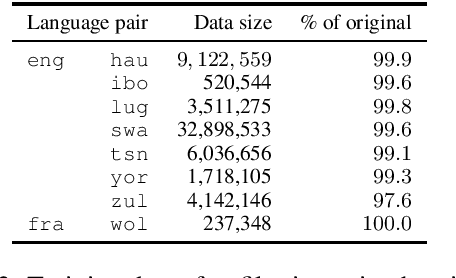


Abstract:We participated in the WMT 2022 Large-Scale Machine Translation Evaluation for the African Languages Shared Task. This work describes our approach, which is based on filtering the given noisy data using a sentence-pair classifier that was built by fine-tuning a pre-trained language model. To train the classifier, we obtain positive samples (i.e. high-quality parallel sentences) from a gold-standard curated dataset and extract negative samples (i.e. low-quality parallel sentences) from automatically aligned parallel data by choosing sentences with low alignment scores. Our final machine translation model was then trained on filtered data, instead of the entire noisy dataset. We empirically validate our approach by evaluating on two common datasets and show that data filtering generally improves overall translation quality, in some cases even significantly.
Beyond the Imitation Game: Quantifying and extrapolating the capabilities of language models
Jun 10, 2022Abstract:Language models demonstrate both quantitative improvement and new qualitative capabilities with increasing scale. Despite their potentially transformative impact, these new capabilities are as yet poorly characterized. In order to inform future research, prepare for disruptive new model capabilities, and ameliorate socially harmful effects, it is vital that we understand the present and near-future capabilities and limitations of language models. To address this challenge, we introduce the Beyond the Imitation Game benchmark (BIG-bench). BIG-bench currently consists of 204 tasks, contributed by 442 authors across 132 institutions. Task topics are diverse, drawing problems from linguistics, childhood development, math, common-sense reasoning, biology, physics, social bias, software development, and beyond. BIG-bench focuses on tasks that are believed to be beyond the capabilities of current language models. We evaluate the behavior of OpenAI's GPT models, Google-internal dense transformer architectures, and Switch-style sparse transformers on BIG-bench, across model sizes spanning millions to hundreds of billions of parameters. In addition, a team of human expert raters performed all tasks in order to provide a strong baseline. Findings include: model performance and calibration both improve with scale, but are poor in absolute terms (and when compared with rater performance); performance is remarkably similar across model classes, though with benefits from sparsity; tasks that improve gradually and predictably commonly involve a large knowledge or memorization component, whereas tasks that exhibit "breakthrough" behavior at a critical scale often involve multiple steps or components, or brittle metrics; social bias typically increases with scale in settings with ambiguous context, but this can be improved with prompting.
WeightScale: Interpreting Weight Change in Neural Networks
Jul 07, 2021


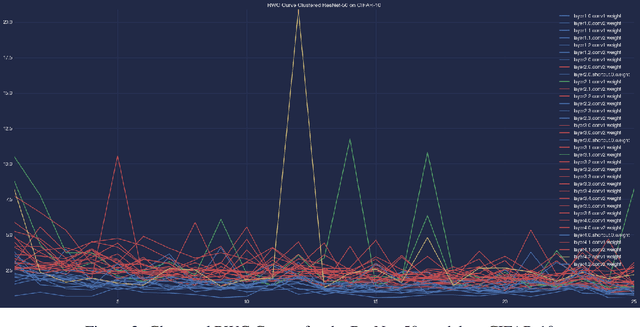
Abstract:Interpreting the learning dynamics of neural networks can provide useful insights into how networks learn and the development of better training and design approaches. We present an approach to interpret learning in neural networks by measuring relative weight change on a per layer basis and dynamically aggregating emerging trends through combination of dimensionality reduction and clustering which allows us to scale to very deep networks. We use this approach to investigate learning in the context of vision tasks across a variety of state-of-the-art networks and provide insights into the learning behavior of these networks, including how task complexity affects layer-wise learning in deeper layers of networks.
Why is Pruning at Initialization Immune to Reinitializing and Shuffling?
Jul 05, 2021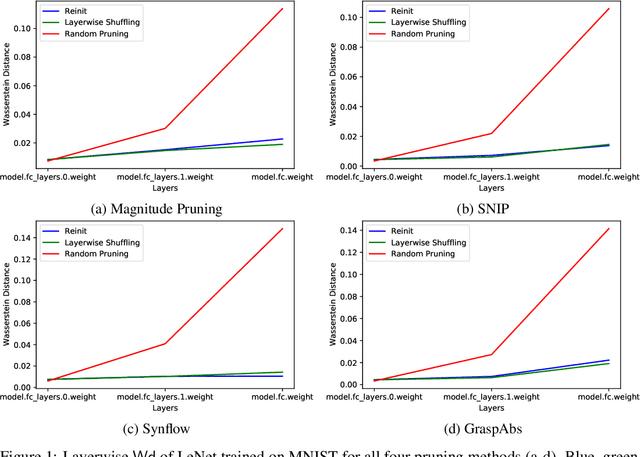

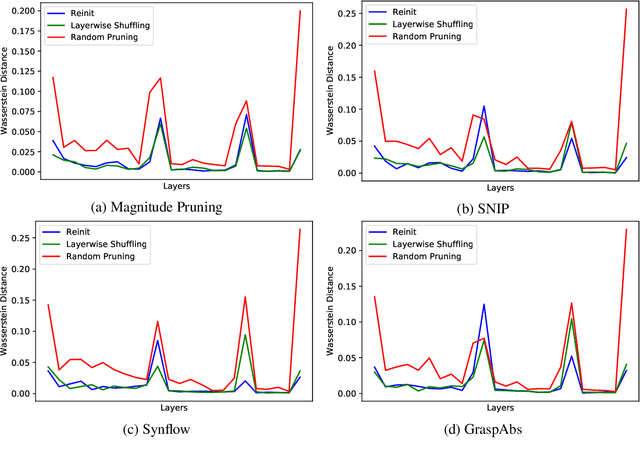
Abstract:Recent studies assessing the efficacy of pruning neural networks methods uncovered a surprising finding: when conducting ablation studies on existing pruning-at-initialization methods, namely SNIP, GraSP, SynFlow, and magnitude pruning, performances of these methods remain unchanged and sometimes even improve when randomly shuffling the mask positions within each layer (Layerwise Shuffling) or sampling new initial weight values (Reinit), while keeping pruning masks the same. We attempt to understand the reason behind such network immunity towards weight/mask modifications, by studying layer-wise statistics before and after randomization operations. We found that under each of the pruning-at-initialization methods, the distribution of unpruned weights changed minimally with randomization operations.
Using Anomaly Feature Vectors for Detecting, Classifying and Warning of Outlier Adversarial Examples
Jul 01, 2021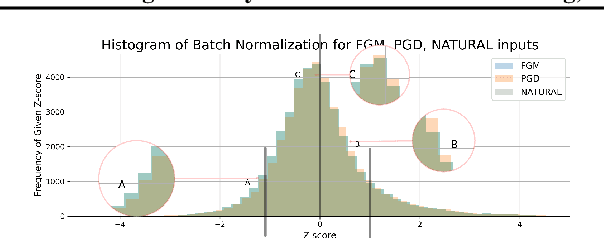
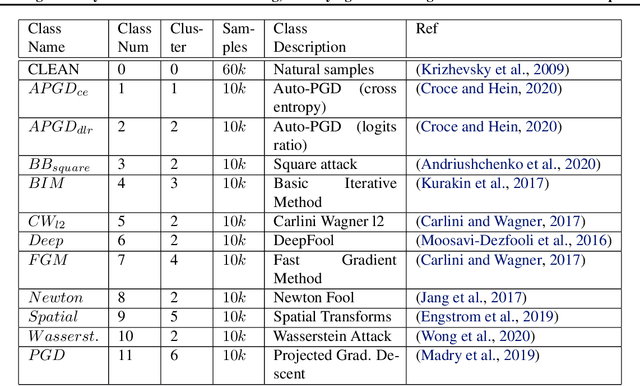
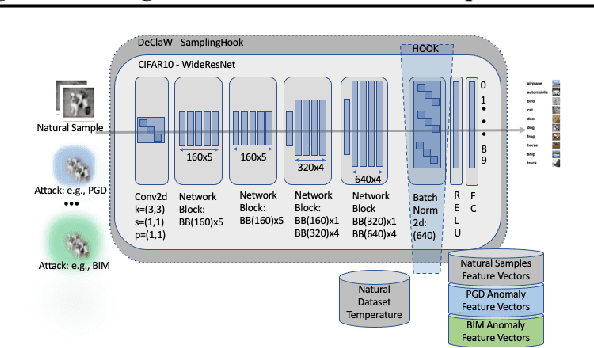
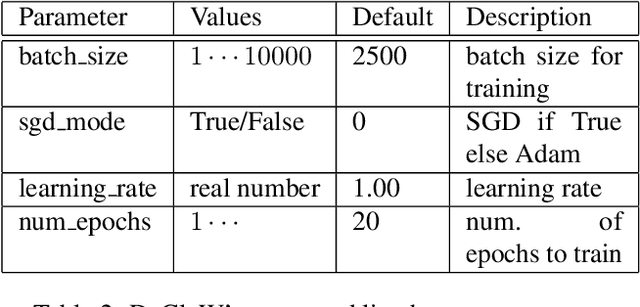
Abstract:We present DeClaW, a system for detecting, classifying, and warning of adversarial inputs presented to a classification neural network. In contrast to current state-of-the-art methods that, given an input, detect whether an input is clean or adversarial, we aim to also identify the types of adversarial attack (e.g., PGD, Carlini-Wagner or clean). To achieve this, we extract statistical profiles, which we term as anomaly feature vectors, from a set of latent features. Preliminary findings suggest that AFVs can help distinguish among several types of adversarial attacks (e.g., PGD versus Carlini-Wagner) with close to 93% accuracy on the CIFAR-10 dataset. The results open the door to using AFV-based methods for exploring not only adversarial attack detection but also classification of the attack type and then design of attack-specific mitigation strategies.
Benchmarking Differential Privacy and Federated Learning for BERT Models
Jun 26, 2021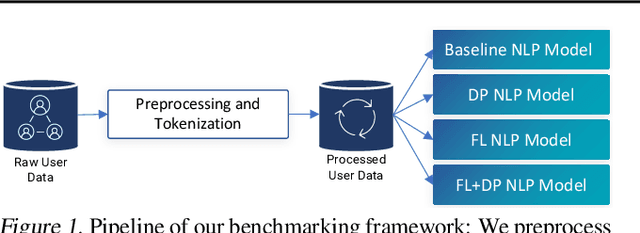
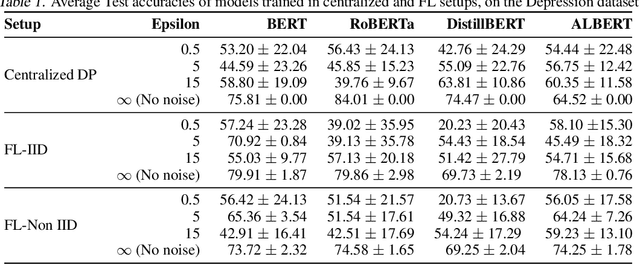
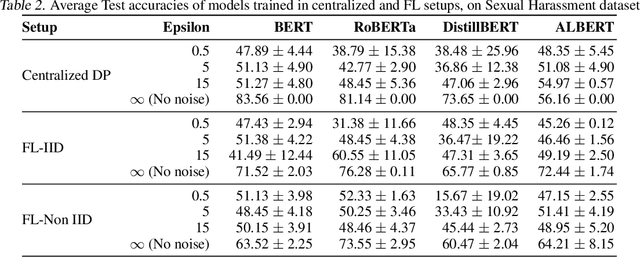
Abstract:Natural Language Processing (NLP) techniques can be applied to help with the diagnosis of medical conditions such as depression, using a collection of a person's utterances. Depression is a serious medical illness that can have adverse effects on how one feels, thinks, and acts, which can lead to emotional and physical problems. Due to the sensitive nature of such data, privacy measures need to be taken for handling and training models with such data. In this work, we study the effects that the application of Differential Privacy (DP) has, in both a centralized and a Federated Learning (FL) setup, on training contextualized language models (BERT, ALBERT, RoBERTa and DistilBERT). We offer insights on how to privately train NLP models and what architectures and setups provide more desirable privacy utility trade-offs. We envisage this work to be used in future healthcare and mental health studies to keep medical history private. Therefore, we provide an open-source implementation of this work.
DP-SGD vs PATE: Which Has Less Disparate Impact on Model Accuracy?
Jun 22, 2021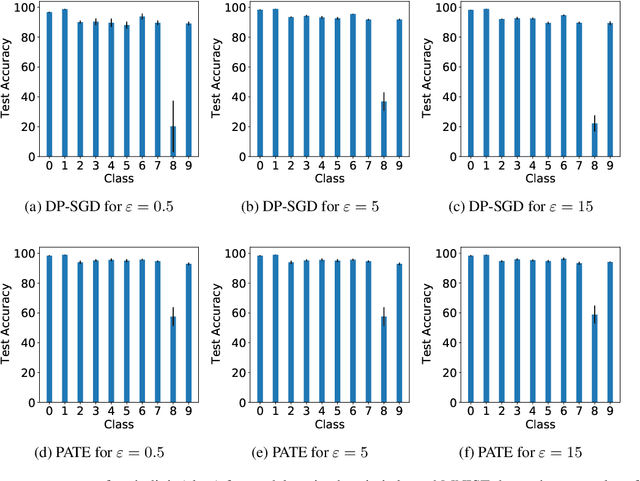

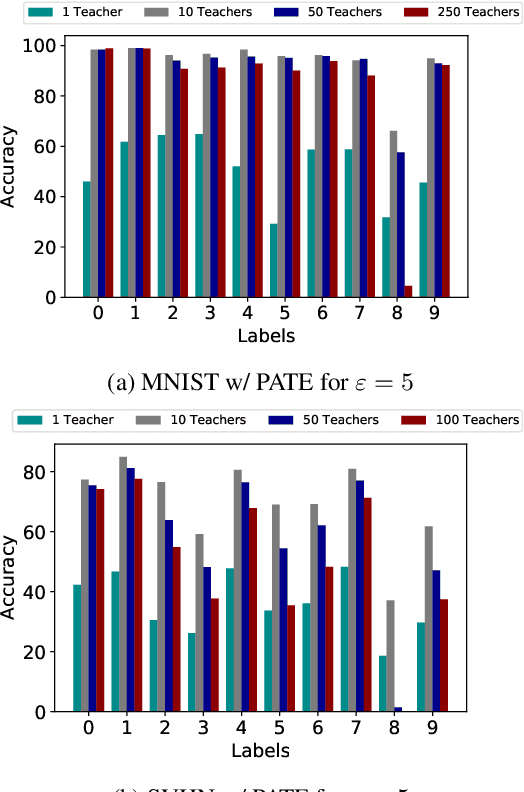
Abstract:Recent advances in differentially private deep learning have demonstrated that application of differential privacy, specifically the DP-SGD algorithm, has a disparate impact on different sub-groups in the population, which leads to a significantly high drop-in model utility for sub-populations that are under-represented (minorities), compared to well-represented ones. In this work, we aim to compare PATE, another mechanism for training deep learning models using differential privacy, with DP-SGD in terms of fairness. We show that PATE does have a disparate impact too, however, it is much less severe than DP-SGD. We draw insights from this observation on what might be promising directions in achieving better fairness-privacy trade-offs.
 Add to Chrome
Add to Chrome Add to Firefox
Add to Firefox Add to Edge
Add to Edge